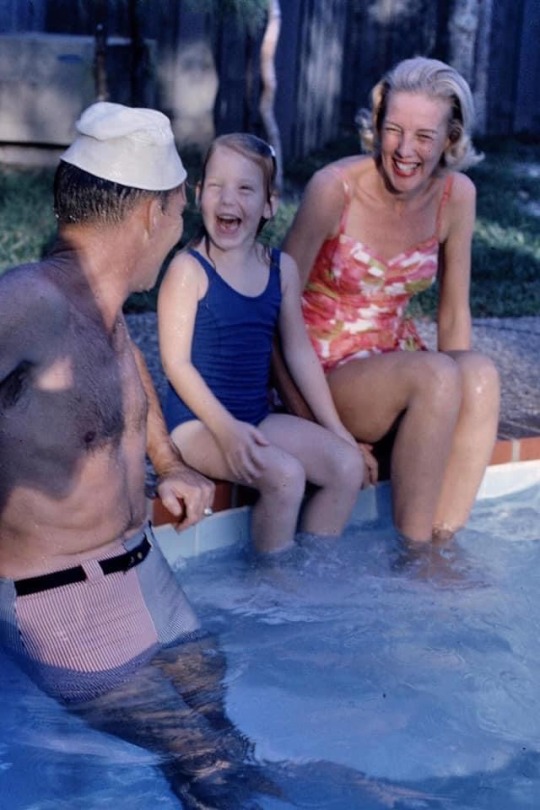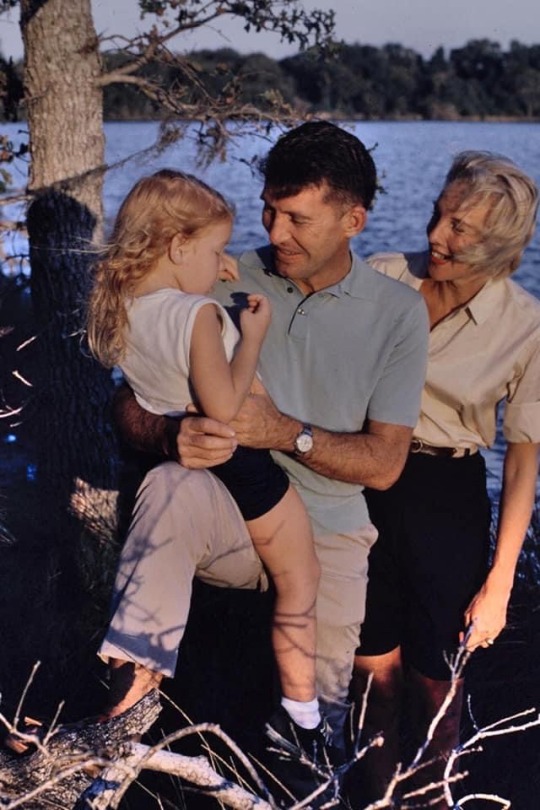#wally schirra
Photo
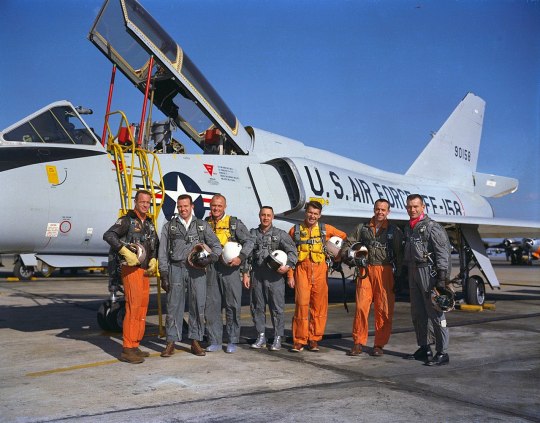
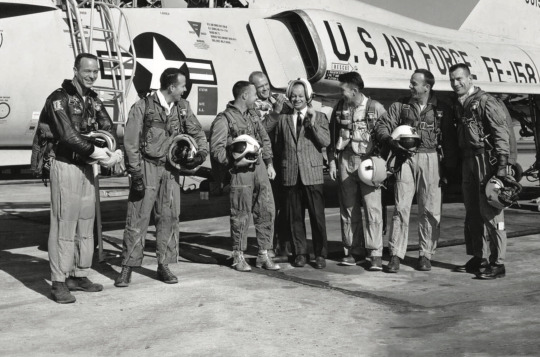
The famous Mercury Seven photograph — and an alternate version, featuring NASA public affairs officer Shorty Powers taking his place as the “eighth astronaut,” 1961
#mercury seven#astronauts#NASA#1960s#*#scott carpenter#gordo cooper#gus grissom#john glenn#wally schirra#alan shepard#deke slayton#shorty powers
86 notes
·
View notes
Text

came across this pic of Apollo 7 from the San Diego Air and Space Museum archives I've never seen before and felt the need to share
28 notes
·
View notes
Text
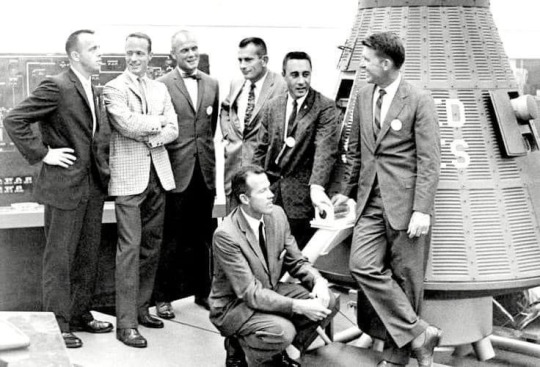
(Credit to NASA)
73 notes
·
View notes
Text
RIP Walter Cunningham, chosen in 1963 as one of "The Fourteen" and was LMP on Apollo 7. He spent a total of 10 days 20 hrs and 8 mins aboard the first manned Apollo mission to launch successfully in 1967.

Source: Wikipedia
Credit: NASA
0 notes
Text
constellation on apple tv+ actually sounds really tasty I'm sold on it
#HUGE day for women who are a little bit neurodivergent about human spaceflight and its associated jankiness#<- literally just finished up an assignment today where I could have written about any topic under the sun. wrote about wally schirra#txt
8 notes
·
View notes
Text
Cancelled Flights: Apollo 2 (AS-205) (Part 1)

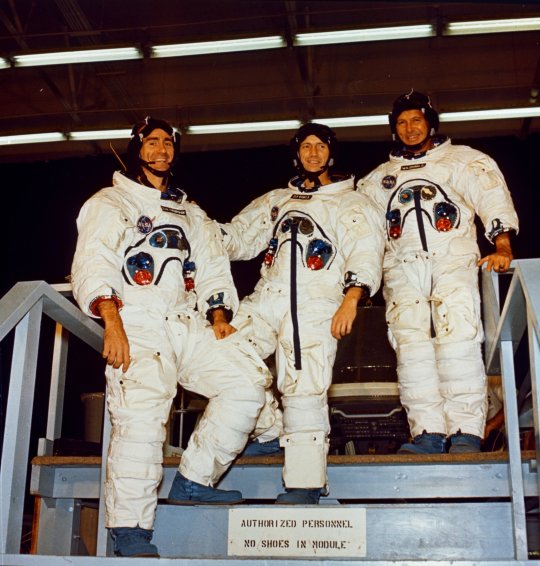
Commander: Walter Marty, Jr. "Wally" Schirra
CM Pilot: Donn Fulton Eisele
LM Pilot: Ronnie Walter "Walt" Cunningham
Planned Launch: April 1967
Vehicle: Saturn IB (SA-205), CSM-014
T"his was planned as the second manned flight of the Apollo spacecraft. This flight was finally seen as unnecessary; the decision to cancel it came on November 16 and was officially announced on December 22, 1966. Flew later as Apollo 7.
Planned second solo flight test of the Block I Apollo CSM on a Saturn IB. Cancelled after the Apollo 204 fire.
This flight was referred to by everyone outside of the astronaut office as AS-205 or CSM-014. This flight was finally seen as unnecessary; the decision to cancel it came on November 16 and was officially announced on December 22, 1966; the Schirra crew instead became, briefly, the backup crew to Apollo 1 (replacing the original backup crew of McDivitt, Scott, Schweickart). After the Apollo 1 fire on January 27, 1967, the Schirra crew was assigned to Apollo 7, the first manned flight test of the new Block II Apollo CSM-101."
-Information from Astronautix.com: link
source
NASA ID: 68-HC-225
#Apollo 2#AS-205#CSM-014#Apollo CSM Block I#Saturn IB#SA-205#Rocket#NASA#Apollo Program#C-type Mission#Cancelled#April#1967#my post
19 notes
·
View notes
Text
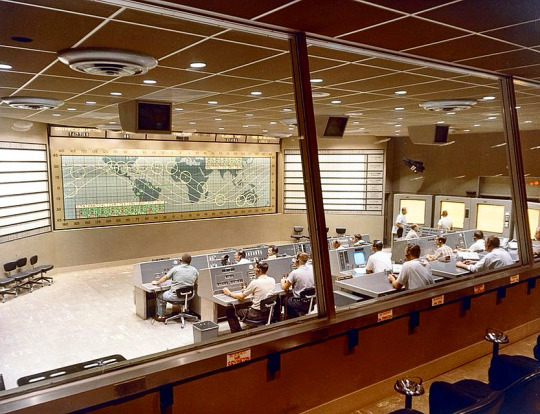
Ground control to Major Tom. Scene at the Mercury Control Center at Cape Canaveral in Oct 1962 during the Mercury Atlas 8 Mission. This spaceflight by astronauts Wally Schirra orbited Earth 6 times & lasted 9 hours. All Project Mercury flights and Gemini 1-3 missions were monitored here. Mission Control moved to Houston from Gemini IV onwards.
#project mercury#1962#mission control#cape canaveral#space mission#astronauts#1960s#astronaut#space exploration#space#space travel#nasa#vintage space#moon landing#space race#space age#space program#space history#nasa photos
28 notes
·
View notes
Text
This week in aviation history
21 February 1961: A Milestone in Human Space Exploration. Imagine a time when space travel was more than a wild fantasy, a time when it transformed into a thrilling reality. The week of February 21, 1961, marked such a pivotal moment in aviation history. It was the final training phase for the Mercury 7 astronauts, an elite group destined to become America's first voyagers into the great unknown of space.
The Heroes of the Skies: Mercury 7

The Mercury 7 astronauts pose in front of a Convair F-106 (NASA)
These seven determined men were: Scott Carpenter, Gordon Cooper, John Glenn, Gus Grissom, Wally Schirra, Alan Shepard, and Deke Slayton. These individuals weren't just pilots; they were pioneers at the vanguard of a new era. Selected from a pool of over 500 candidates, they each possessed the 'right stuff' – a blend of skill, courage, and determination that set them apart as the best of the best.
Training for the Unknown
Their training was unlike anything seen before. It was rigorous, pushing the boundaries of physical and mental endurance. They underwent grueling tests that simulated the harsh conditions of space – from spinning in centrifuges to enduring periods of weightlessness. This week in 1961, as they entered the final stages of their training, the anticipation and excitement were palpable, not just among the astronauts but across the nation.
The Chosen Three: Shepard, Grissom, and Glenn
In a significant announcement, Alan Shepard, Gus Grissom, and John Glenn were selected for the initial flights. Shepard, with his steely nerves and exceptional piloting skills, was slated for the first American manned spaceflight. Grissom, known for his calm under pressure, was set to follow. And Glenn, a decorated Marine pilot, would become the first American to orbit the Earth.
A Legacy That Echoes Through Time
The Mercury 7's journey was more than a series of space missions; it was a testament to human ambition and resilience. Their achievements laid the groundwork for future space exploration, paving the way for moon landings and even Mars missions that we dream of today.
Celebrating the Courage and Vision
As we remember this significant week in aviation history, let's not just reflect on the technological achievements, but also the spirit of exploration that drove these seven men. They ventured into the unknown, not just for themselves, but for all of humanity, inspiring generations to look up at the stars and dream big.
The legacy of the Mercury 7 astronauts continues to inspire us, reminding us that with courage, vision, and determination, reminding us that the sky is not the limit – it's just the beginning.
@Hangarflyingwithtog via X
9 notes
·
View notes
Text
DUDE found out one of our tutors who’s an older gentleman met a BUNCH of astronauts including Al Shepard, Wally Schirra, Charlie Duke, AND John Young and he watched 15 shuttle launches so we talked about it for 40 minutes
5 notes
·
View notes
Text
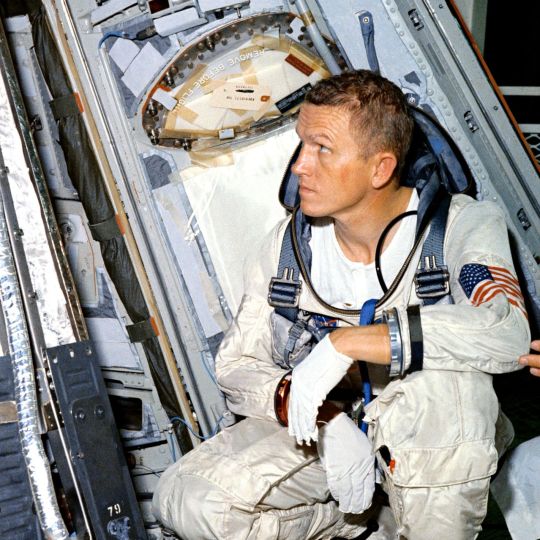
On Christmas Eve 1968, as commander of Apollo 8 – the first manned lunar orbital mission – Frank Borman, who has died aged 95, came out with words that, alongside Neil Armstrong’s “giant leap for mankind”, from Apollo 11 in 1969, and Jack Swigert and Jim Lovell’s “OK, Houston, we’ve had a problem”, from Apollo 13 in 1970, defined an era.
In that moment before the moon programme became mundane, when astronauts were prime time, Apollo 8’s broadcast ended with the crew – Bill Anders, Lovell and Borman – reading the story of Earth’s creation as written in the book of Genesis.
It was Borman’s conclusion, “Good night, good luck, a merry Christmas and God bless all of you, all of you on the good Earth”, that clinched it. For Gene Kranz, Nasa’s chief of flight control operations in Houston, the phrase was “literally magic. It made you prickly. You could feel the hair on your arms rising, and the emotion was just unbelievable.”
Thus, for some, the traumatic 1968 of the ongoing Vietnam war, the assassinations of Martin Luther King and Robert Kennedy, and the crushing of Czechoslovakia, had been transcended. From a distance – around 238,855 miles – it was still, apparently, the good Earth.
Around two years earlier, Nasa had been in crisis. On 27 January 1967, Gus Grissom, Ed White and Roger Chaffee had been incinerated on Apollo 1 during a test launch. Borman was appointed to the Nasa board which, that April, reported on the fire, slamming Nasa management and North American Aviation for its “ignorance, sloth and carelessness”.
Borman was then sent to North American’s plant in Downey, California – where drunkenness had been rife – to scrutinise command module redesign. “Borman set them straight,” wrote the second man on the moon, Buzz Aldrin, in Men from Earth (1989). “His shoot-from-the-hip management style – some called it bullying – worked.”
The Mercury programme had put astronauts in space. Gemini – to which Borman had been recruited in 1962 – had honed the business of Apollo: to fulfil President John F Kennedy’s goal of a manned moon landing by the end of the decade. In December 1965, Borman and Lovell had made their space debut with a record 14 days of orbit on Gemini 7, and also made a rendezvous with Gemini 6.
In the wake of the 1967 tragedy there were three unmanned Apollo launches, with mixed results. But in September 1968 the unmanned Soviet Zond 5’s orbit of the moon triggered alarm in the US. The Soviets had launched Sputnik, and the space age, in 1957. The first man in space, Yuri Gagarin, had orbited Earth in April 1961. That, along with the furore around the Bay of Pigs fiasco, had helped propel JFK into making his rash pledge in May 1961.
Seven years on, in autumn 1968, Nasa and the CIA were asking whether history was going to repeat itself. Would a Russian be first around the moon? That October, the Apollo 7 astronauts, Wally Schirra, Walter Cunningham and Donn Eisele, spent a successful, albeit cold-ridden and fractious, 10 days in orbit around the Earth. There were rows with ground control. None of those three would get another mission.
Nasa needed a breakthrough. Rather than the next planned Earth orbit, Apollo 8 was to be sent to the moon and, after the astronaut Jim McDivitt turned down the offer, Borman got the job. On 21 December, following a morale-boosting visit from the aviator Charles Lindbergh, Borman, Lovell and Anders blasted off.
Borman’s greatest fear, wrote Andrew Chaikin in A Man on the Moon (1994), was that the moon mission would be aborted and Apollo 8 would be confined to orbiting the Earth. It did not happen, but en route Borman was afflicted by vomiting and diarrhoea, the detrital consequences of which floated on, to be trapped by paper towels. The three men orbited the moon 10 times in 20 hours, descended to 69 miles above the rock’s surface, and were the first to witness the far side of what Borman called “a great expanse of nothing”.
It was on the fourth orbit that Borman spotted the Earth rising from behind the moon – an image that Anders captured on colour film and became known as Earthrise. “Oh my God! Look at the picture over there. Here’s the Earth coming up,” Borman is recorded shouting in a transcript.
Born in Gary, Indiana, Frank was the son of Edwin Borman, who ran an Oldsmobile dealership, and Marjorie (nee Pearce). The family moved to Tucson, Arizona, where his mother opened a boarding house, and Frank went to the local high school. He first flew as a teenager, in 1943. Seven years later he graduated from West Point Military Academy in New York state.
From 1950 Borman flew F-84 fighter-bombers with the US Air Force. A perforated ear drum denied him Korean war combat experience. In 1957 he gained a master’s in aeronautical engineering from the California Institute of Technology and became an assistant professor of thermodynamics and fluid mechanics at West Point.
Three years later he graduated from the Aerospace Research Pilot School at Edwards air force base in California. There, his aircraft included the controversial Mach 2 Lockheed F-104 Starfighter. It was in 1962 that, alongside Armstrong, Lovell and others, he became one of Nasa’s Gemini programme “New Nine”. Apollo 8 proved what had been evident to insiders for many years: that the US had won the space race. Borman, Anders and Lovell became Time magazine’s 1968 men of the year.
Having achieved the rank of colonel in the mid-1960s, Borman retired from the USAF and space flight and, after a sojourn at Harvard Business School, joined Eastern Air Lines. By 1975 he was Eastern’s CEO and a year later became chairman. But by the late 70s competition was intensifying, labour relations were deteriorating and Borman – never a diplomat – was in the firing line. He quit the company in 1986 when it was taken over by a corporate raider, and Eastern collapsed five years later.
He and his wife, Susan (nee Bugbee), whom he had married in 1950, moved to New Mexico, where he remained involved in business interests. They later settled in Billings, Montana, where he had a cattle ranch and rebuilt vintage aircraft. A supporter of Richard Nixon and both George Bushes, Borman was a man of brisk views. Among the many targets of his ire were the sound barrier-breaking pilot Chuck Yeager, the Democratic party presidential candidate Michael Dukakis and the scientist Carl Sagan.
He received many honours, including the Congressional Space Medal of Honor in 1978, and published his autobiography, Countdown, in 1988.
Susan died in 2021. His sons, Frederick and Edwin, four grandchildren and six great-grandchildren survive him.
🔔 Frank Frederick Borman II, astronaut, born 14 March 1928; died 7 November 2023
Daily inspiration. Discover more photos at Just for Books…?
12 notes
·
View notes
Note
ava & mary (platonic) + annual
"There, across the water? That's Timber Cove. Four of the Mercury Seven lived there at the advent of astronaut celebrity. Wally Schirra and Gus Grissom's houses didn't even have front windows in an effort to maintain their privacy. But now? I could walk anywhere in the city and no one would recognize my face."
"I'm not sure why you'd want them to," Mary replies easily, dropping the wheelbarrow handles so she can wipe her face on her shirtsleeve. "Shannon still gets swarmed for autographs every time we go to the grocery store. It's a nightmare."
Ava clicks her tongue. "It's like this, I think," she says, gesturing down at the trays of seedlings. "Annuals bloom and die, but perennials? I plant hyacinths for my mom everywhere I live long enough to. And, sure, I'll only see them grow those first few years, but I know they're still there even when I've moved on. Still flowering, year after year. And it's like a piece of her lives on in them, in the people who get to look at them." She trails a finger along the lip of a bud. "It's not necessarily that I want to be famous, I guess is what I'm trying to say. I just want my memory to linger like those hyacinths I've left planted around the country. To bring joy to people's lives when they think of me. I just want someone to remember me when I'm gone."
36 notes
·
View notes
Photo

60 years ago... Faith 7
May 1963, USAF Major Mercury astronaut Leroy Gordon “Gordo” Cooper is seen at the top of Pad 14 at Cape Canaveral looking over his one-man “Faith-7″ Mercury-Atlas spacecraft.
Gordon Cooper choose to wear both his personal wrist watches, an Accutron Astronaut tuning fork GMT pilot watch at his right wrist and an Omega Speedmaster CK2998-4 manual winding chronograph at his left wrist.
Both watches had a Jacoby Bender Champion steel mesh bracelet and Cooper compared his timepieces during the 34 hours 3 minutes 30 seconds long mission (22 orbits). Both watches worked flawlessly.
All Mercury astronauts received an Accutron wrist watch and at least 8 of the 12 X-15 testpilots, among whom Neil Armstrong, wore an Accutron GMT pilot watch during X-15 hypersonic research flights. Accutron watches were worn during Mercury-Atlas 9, Gemini III, Gemini V, STS-7 and STS-51D spaceflight missions.
Earlier, astronauts Donald Deke Slayton and Walter Wally Schirra were spotted wearing an Omega Speedmaster CK2998-4. However, Alan Shepard, acting backup for Gordo Cooper lobbyed for an extra MA-10 mission, during which he was going to wear an Accutron Astronaut GMT pilot watch as seen in numerous training photographs. MA-10 was never flown.
(Photo: NASA)
#Aviator#Astronaut#Accutron#GMT#pilot watch#The Right Stuff#NASA#military#montres#Omega#MoonwatchUniverse#JBchampion#CK2998#chronograph#321#Mercury Seven#Cape Canaveral#wrist watch#Zulu time
21 notes
·
View notes
Text
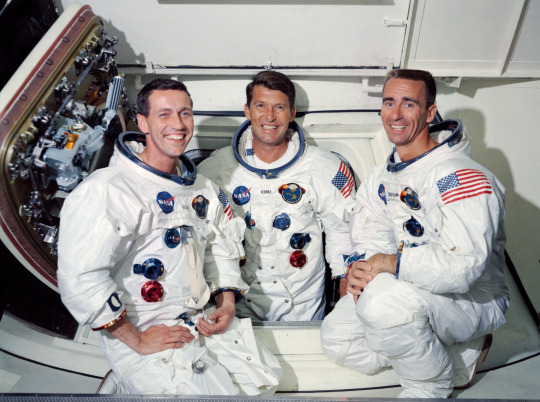

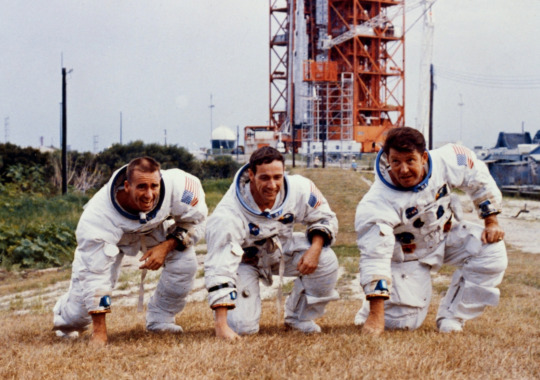
October 11, 1968: Apollo 7 launches into space
Apollo 7 was the first manned Apollo mission and NASA's return to flight following the Apollo 1 disaster in January 1967. It carried a crew of three— Wally Schirra, Donn Eisele, and Walt Cunningham— on an 11-day test of the Apollo spacecraft in low Earth orbit.
Celebrate Apollo 7's 55th anniversary with 10 fun facts about the mission!
14 notes
·
View notes
Text
Space History ...


On 12/15/65 Gemini VIA (Wally Schirra and Tom Staffor) and Gemini VII (Frank Borman and Jim Lovell) performed the first crewed space rendezvous.
The next time the two spacecraft would encounter one another...
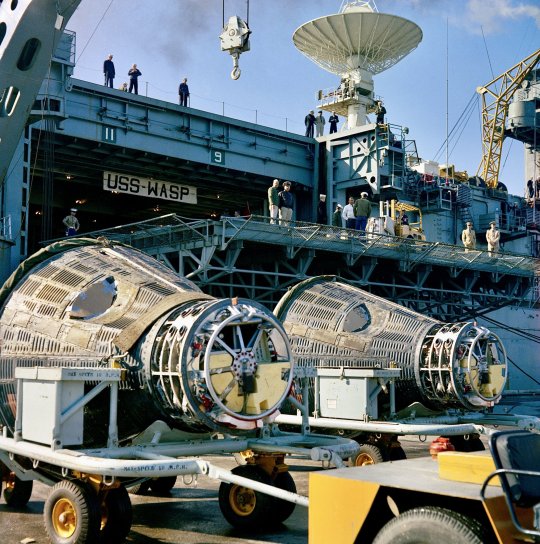
... was on the recovery carrier USS WASP.
They look rather sorry for themselves, not the elegant black-and-white spacecraft seen floating serenely in orbit. The white adapter section (containing equipment. supplies and retrorockets) was jettisoned in orbit. The long snout (containing parachutes and the rendezvous radar) was also jettisoned on the way down, leaving just the crew cabin. Beryllium shingles around the nose have been removed to purge residual toxic fuel from the nose-mounted thrusters.
After that, the two spacecraft went their separate ways. VIA is at the Stafford Air & Space Museum in Weatherford, Oklahoma (Tom Stafford's home town) and VII is in the National Air & Space Museum in Washington DC.
2 notes
·
View notes
Text
thanks @dakovas-basette for the tag! 💗
last song: I had to check my last fm because I've mostly been listening to podcasts and youtube videos lately, but apparently my last song was zydrate anatomy :)
last show / currently watching: my last show was 1899, may it rest in peace and haunt netflix execs forever :( I'm not watching anything currently but peaky blinders has been on my radar forever and I'm facing gentle peer pressure from multiple sources (<3) to watch the dresden files. I'm also looking forward to the great pottery throwdown starting again tomorrow!
currently reading: red dragon by thomas harris! I'm following the les mis letters substack so I'm also rereading les misérables, albeit very very slowly
current obsession: NOT beating the autism allegations when I say I'm really interested in the early days of manned spaceflight right now and I'm ready to present a 15 page powerpoint called Wally Schirra Was The Most Astronaut Ever And Here's Why. honourable mentions to the foundation tv show and general aviation
tagging (only if you want to ofc!): @daneelsolivaw, @k1spiegel, @trantors, @tuxedo-fish, @porlovistoeinmasochist, @shazbot32
9 notes
·
View notes
